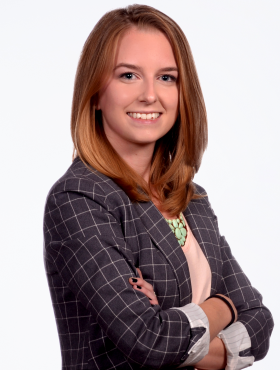Myopia Treatment: How We Manage Your Child’s Myopia
Myopia is a growing problem among children across the world, but what exactly is it and what can you as a parent do to help?
Myopia refers to an eye that is too powerful or long, and as a result causes vision to be blurred when looking at a distant object. When children are young, the length of their eyes (known as “axial length”) goes through growth spurts in a process that is supposed to keep vision clear. The problem arises when your child’s eyes grow too quickly. This fast elongation not only causes blurred vision, but also puts them at a higher risk for certain eye diseases later in life.
Luckily, there are now specialized treatments for myopia progression that have been shown to slow down the growth of the eye. At Treehouse Eyes, when you enroll your child in our myopia management program, you will have access to the most up to date treatment options and technology.
As a first step to becoming a member of the Treehouse Eyes family, you and your child will come into one of our offices for a consultation to ensure we pick the most appropriate treatment plan. At your child’s consultation, you will meet your optometrist, who is specially trained in the area of myopia management. The first part of the exam is a review of your child’s personal risk factors for myopia progression. These include questions regarding family history and specific lifestyle habits. Once we know your child’s risk for myopia progression, specialized machines are used to measure the shape, length, and power of your child’s eyes. We have many machines in our office, but the one that measures axial length is by far the most important. By measuring axial length at the consultation we can determine the severity of your child’s myopia. At follow-ups, we will be able to closely monitor the progression of your child’s axial length and look for patterns of growth that may be problematic.
The consultation will wrap up with a recommendation for treatment. The three main categories of treatments are overnight KIDS lenses, daytime soft contact lenses, and Atropine drops. Your optometrist will review which one is most appropriate for your child.
If contact lenses are recommended, you’ll come into the office for a “Contact Lens Lesson”. This is an hour long session focused on teaching your child how to properly insert and remove contact lenses, as well as the proper cleaning and care procedures. If one lesson is not enough, we will bring you both back for as many you need until your child feels comfortable using their contact lenses at home. Depending on the type of contact lenses we choose, there will be some additional follow-ups once you take the lenses home. These can be at 1-Day, 1-Week, and/or 1-Month. After the initial follow-up visits are done and we feel confident the contact lenses do not need any additional adjustments, we will continue monitoring your child for progress every 3 months.
At your child’s regular follow-up visits, there are a few things we will check every time to ensure they are getting the proper myopia control with their current treatment. For children using overnight KIDS lenses, we will check the fit of the lens using a device called a Topographer. This machine measures the shape and curvature of the cornea, allowing us to visualize the fit of the KIDS lenses on their eyes. If your child is wearing soft contact lenses or using Atropine drops, we will check their refraction (glasses prescription) to see if there have been any changes since their last visit. This will not only give us a tool to check progress, but will also allow us to make adjustments to their contact lens prescription if needed.
Once your child has been in our treatment program for a full year, they will be due for their first annual exam. This exam is typically where we make a final assessment on how effective the treatment has been for that year. Since children are still growing, it is normal to see small amounts of axial length growth (and sometimes a small increase in glasses prescription) over a full year. However, if too much growth or change is seen, adjustments can be made to treatment to increase effectiveness.
At Treehouse Eyes, we are in a unique position to focus solely on your child’s myopia management. If your child is showing progression, we have the capability of adjusting or adding treatment methods to their program. Our optometrists are dedicated to staying up to date on the latest treatment options that will provide your child with the best results. When it comes to myopia, treatment now can immensely help your child in the future.

Dr. Dana Reinhardt, OD
Treehouse Eyes – Bethesda, MD
Prevent serious, sight-robbing eye diseases by scheduling your child’s myopia consultation today. Contact your local Treehouse Eyes provider today and see your child’s quality of life improve before your eyes!

